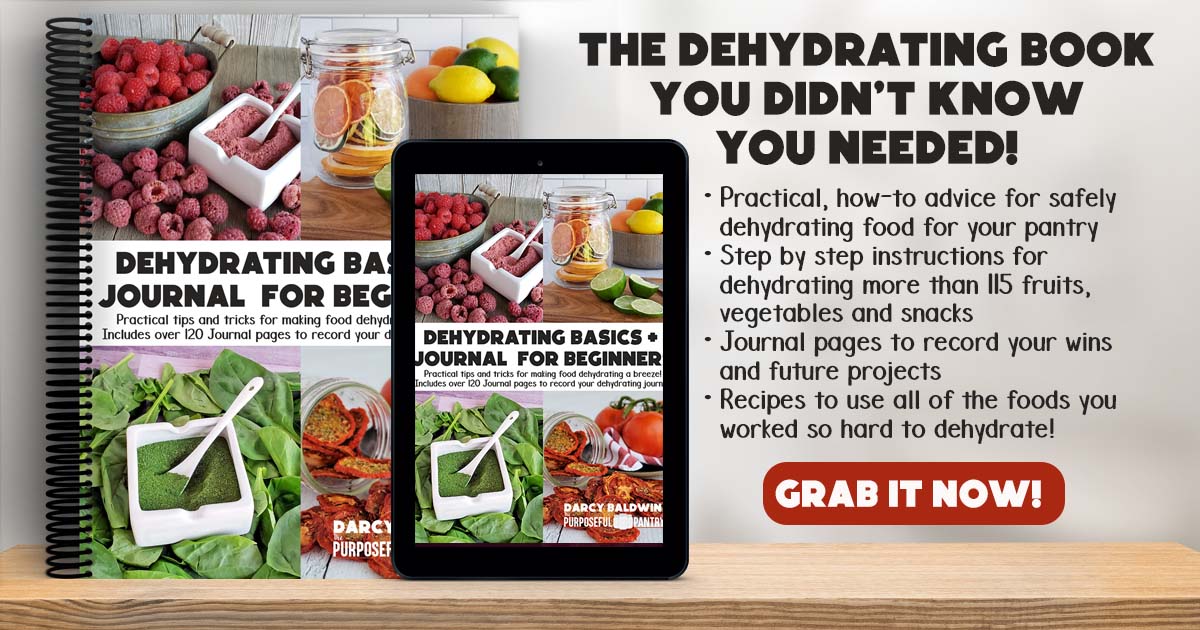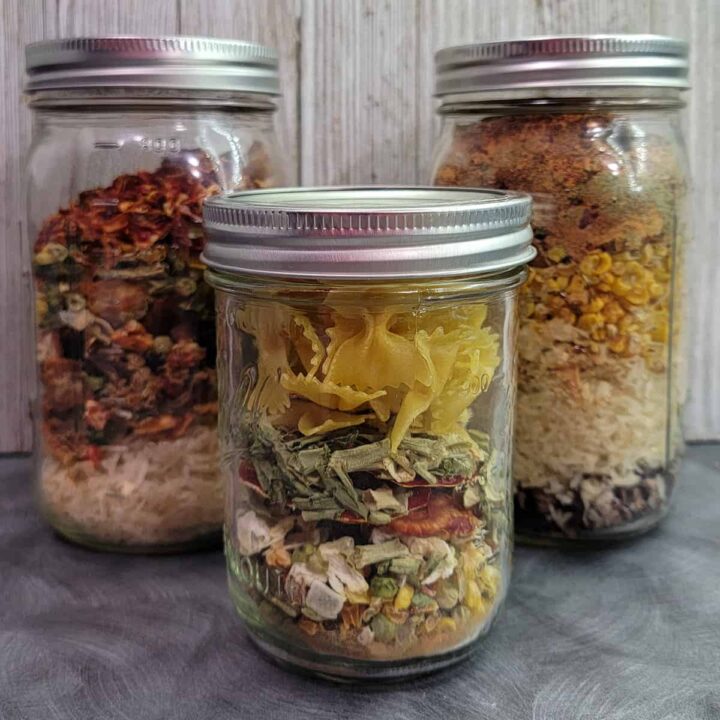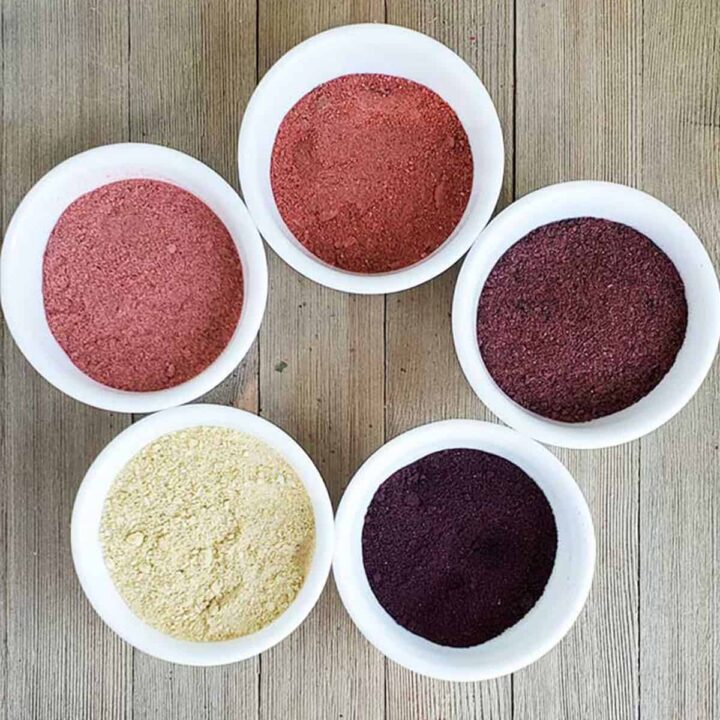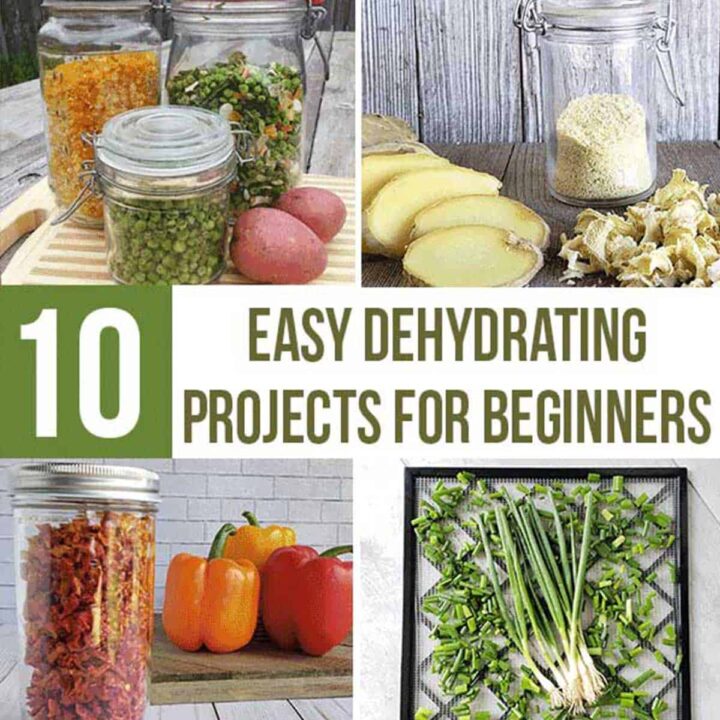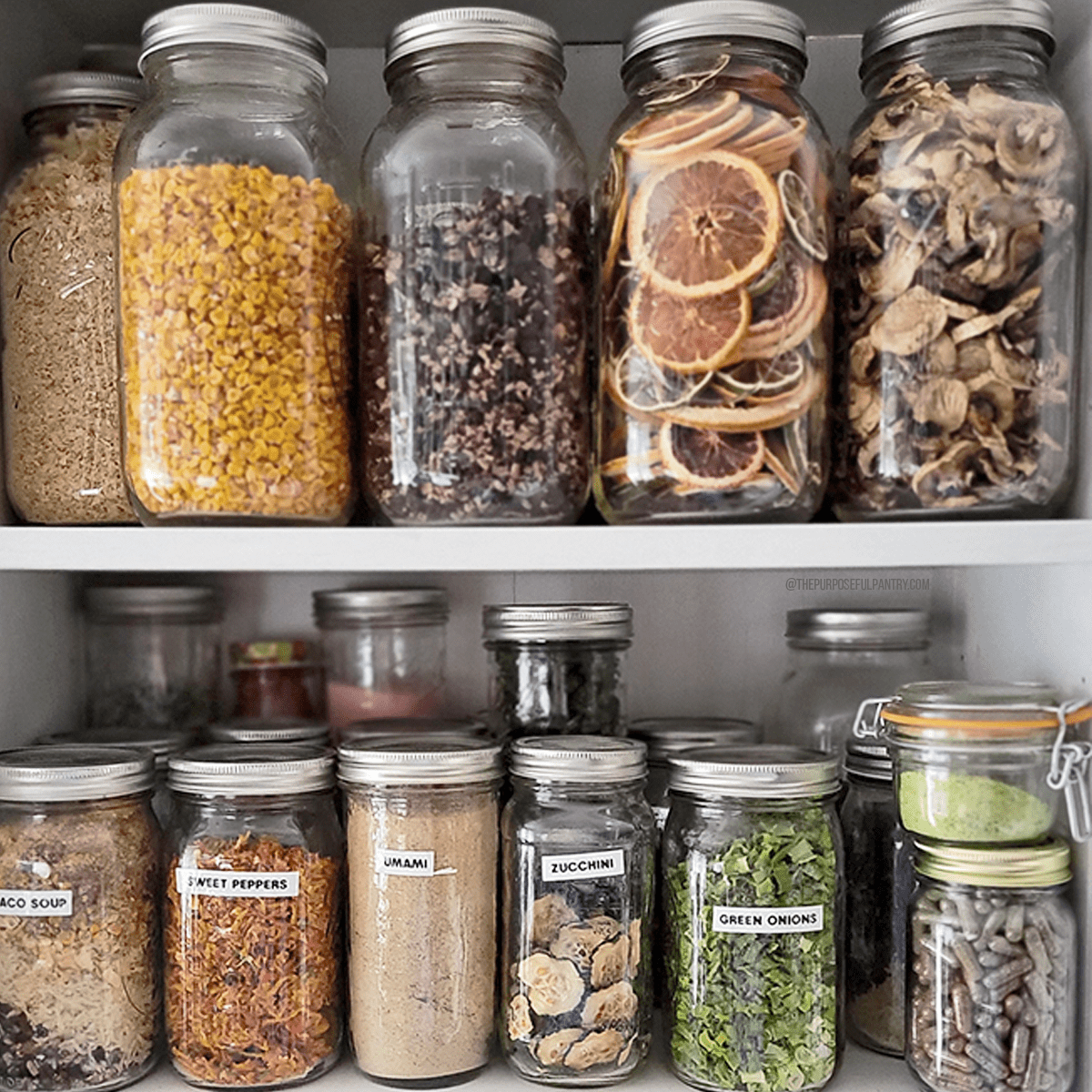
Learning to dehydrate can feel daunting, especially if you don’t have a trusted friend or resource to walk you through it.
But I hope you and I can be friends, and I want you to join me in my kitchen as we walk through the most commonly asked Dehyrating Questions. I’ll give you answers, resources, and everything you need!
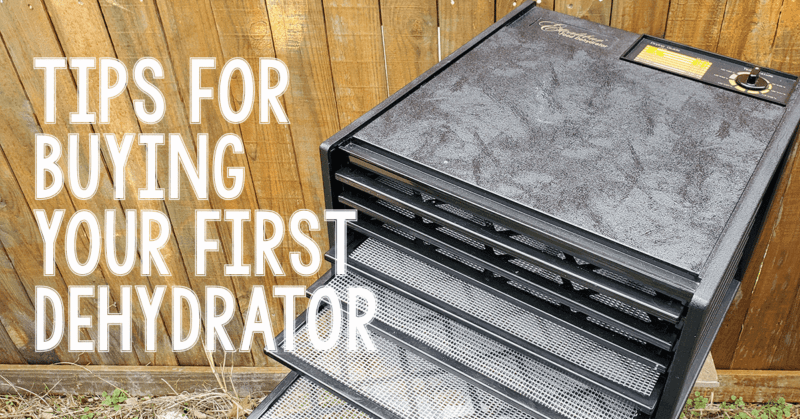
Dehydrating FAQ’s
What Kind of Dehydrator Should I Buy?
I recommend an Excalibur Dehydrator – but all needs are different, and an Excalibur isn’t always the best choice. A Magic Mill Dehydrator may be more your speed and style, or one of the other great dehydrators that are now on the market.
I know that it may be beyond every budget or every need. So I’ve recreated a handy resource to help you choose the perfect dehydrator based on your budget.
How much does it cost to run a dehydrator?
It depends on your local electric rates, the machine’s wattage, and more. I’ll teach you how to quickly factor the cost (which may surprise you how little it actually is!)
What temperatures do I use to dehydrate food?
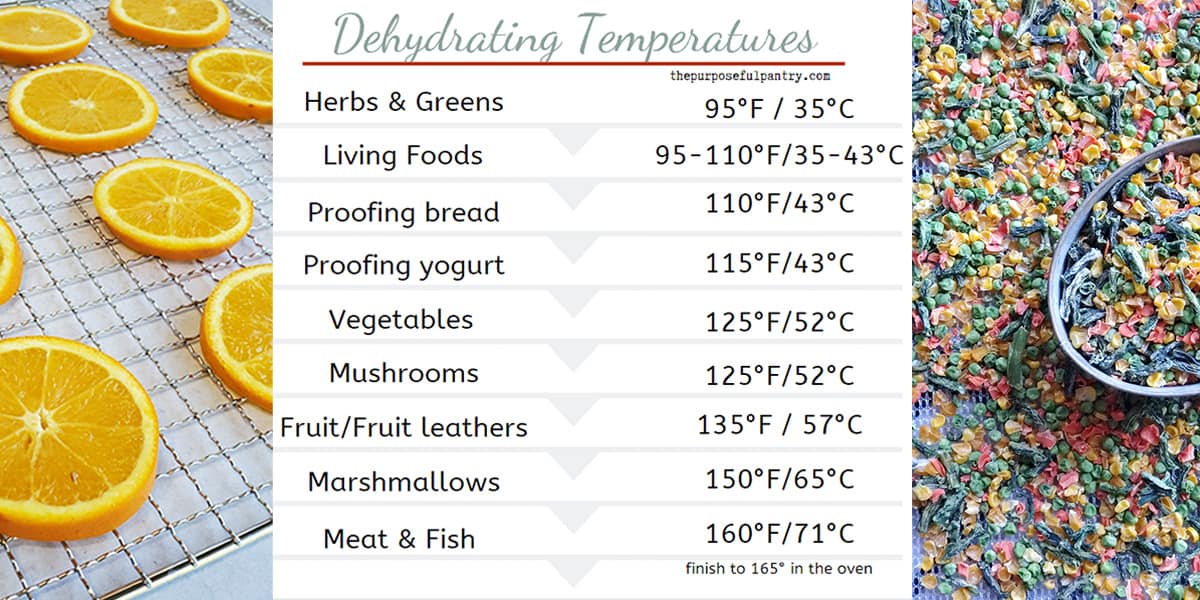
Get this information in a dehydrator magnet or sticker to put on your dehydrator for easy reference.
Learn more about the nuances of dehydrating temperatures from this post about the best dehydrating temperatures for fruits and vegetables.
Can I run the dehydrator at night?
Yes. Dehydrators are made to run 24/7, like any other appliance you may have. If you do turn it off because you are not comfortable running it when you are gone or in bed, remove the food and place it in the refrigerator while it is not running.
Caution: As with all plug-in appliances, be aware to follow proper plug placement, don’t use extension cords, etc. There is a chance of fire as with all appliances, use your own judgment.
How does a food dehydrator work?
Food dehydrators use gentle warm air to remove 85+% of the moisture from foods to be able to store in your pantry. Prep fruits or vegetables according to established guidelines and place them on dehydrator trays, turning to recommended temperatures, and allow them to dry until dry, leathery, hard, and crisp.
How long does it take to dehydrate food?
While times are given in many recipes, take those as a guide, not an absolute. Your machine’s strength, your home’s humidity, how you prepared your produce, etc. all play into the time it takes to dry anything. It can take anywhere from 6-18 hours for vegetables, 8-48 hours for fruit, and 6-10 hours for jerky and fruit leathers.
What are the best dehydrating books?
My biggest recommendations are The Beginner’s Guide to Dehydrating Food (full of amazing photos), The Ultimate Dehydrator Cookbook and The Dehydrator Bible, and Dehydrating Basics + Journal.
You can find other books that I recommend in this rundown of all the best dehydrating books.
Watch me do a start to finish project in my food dehydrator
How to Dehydrate Food
These are the important facts to remember about dehydrating food for your home.
Do I need to blanch vegetables?
Quick Answer: Yes and no.
Root vegetables, corn, peas, broccoli/cauliflower, potatoes are examples of vegetables that should be blanched before dehydrating. Blanching helps stop the enzymatic process that causes food to degrade faster on the shelf, and stops oxidation in some vegetables.
Get a list of vegetables that need to be blanched before dehydrating and a free downloadable chart for what to and what not to blanch and why.
How do I know when food is completely dry?
Vegetables should be hard, plink when you drop them on a hard surface. Vegetable slices should be crisp and break easily. Fruit should be dry and leathery on the surface, pliable but not bendy, and may have a slightly tacky feel, but should not be sticky.
Here is handy information on each specific food.
Vegetables * Fruit
What is conditioning?
Conditioning is that final check to make sure all of your hard work doesn’t go to waste to mold. Observe your goods in an airtight jar that is shaken once a day for up to seven days and watch for moisture build up, foods sticking together or the jar that can’t easily be shaken off. If you see signs of this, put your food back into the dehydrator to dry more.
Caution: If mold is noticed, you need to toss all the contents of the jar.
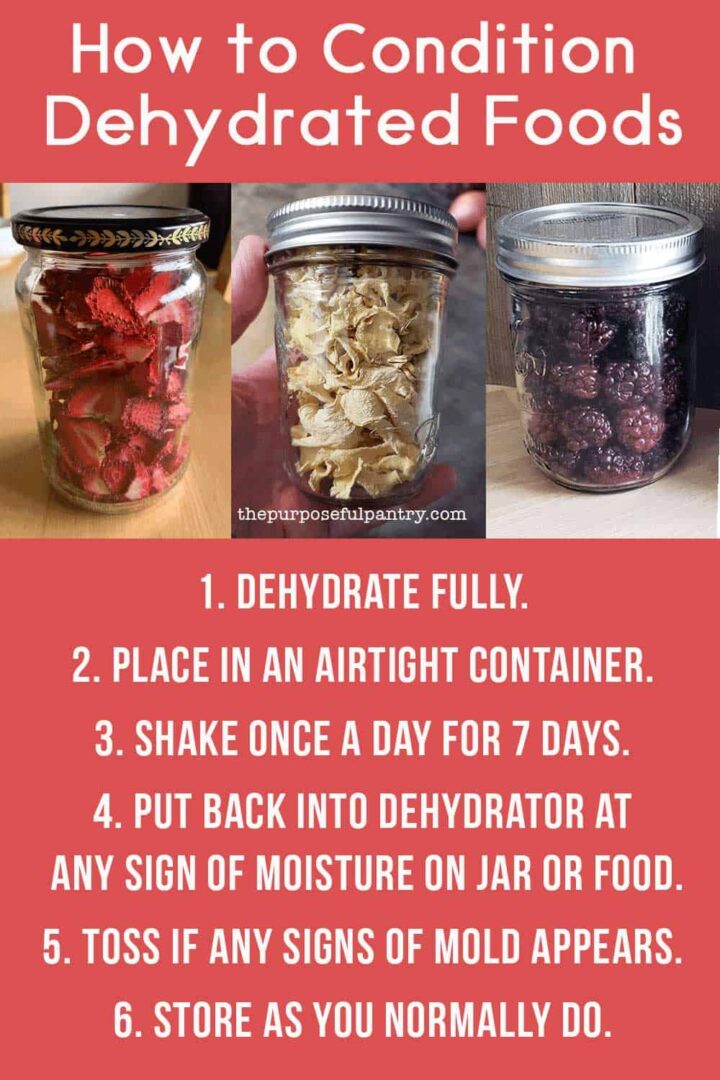
What is an easy dehydrating project for beginners?
Frozen vegetables! They are already prepped, blanched, and ready to be thrown onto dehydrator trays at 125°F/52°C and dried! Apple rings are also a great first project with a little cinnamon on them! You choose to peel and core them or not.
I’ve got 10+ Easiest Dehydrating Projects to do that are almost foolproof that you can do over the weekend.
Are there foods I shouldn’t dehydrate?
Quick Answer: Just about anything CAN be dehydrated, but it doesn’t mean that everything should be dehydrated. Those foods that are high in fat or that require a safe, constant temperature to stop bacterial issues are ones that are not recommended for safe dehydration.
Here is a full list of foods that shouldn’t be dehydrated.
What foods should be dehydrated outside or in the garage?
Aromatics and peppers can be quite odiferous. They put off oils into the air which can be pungent in the beginning and linger. Many people find it better to do it in the garage, a closed-off room, or outside of the weather permits.
Caution – if you have anyone in your home with lung issues, do this outside, especially peppers.
Are oils safe to use in dehydrating?
Quick Answer: Yes, for snacking, such as making vegetable chips.
Longer answer: Not if you intend long-term storage, as oils can go rancid over time, especially after they have been heated.
How do I keep produce from sticking to dehydrator trays?
Use silicone fruit leather trays designed for your machine or you can use parchment/baking paper.
A quick tip: Throw your sheet into the freezer to remove dried produce, or use a razor blade to help release them. Peel the leather sheet away from the product instead of the produce off the sheet. It sounds strange, but it does make a difference.
What is the yield of dehydrated food?
A general equation is 1 cup of fresh food = 1/4-1/3 cup of dried food = 1 tablespoon of powder.
But the good news is that for most things, the approximation doesn’t matter. Cooking can be adjusted to fit your needs easily.
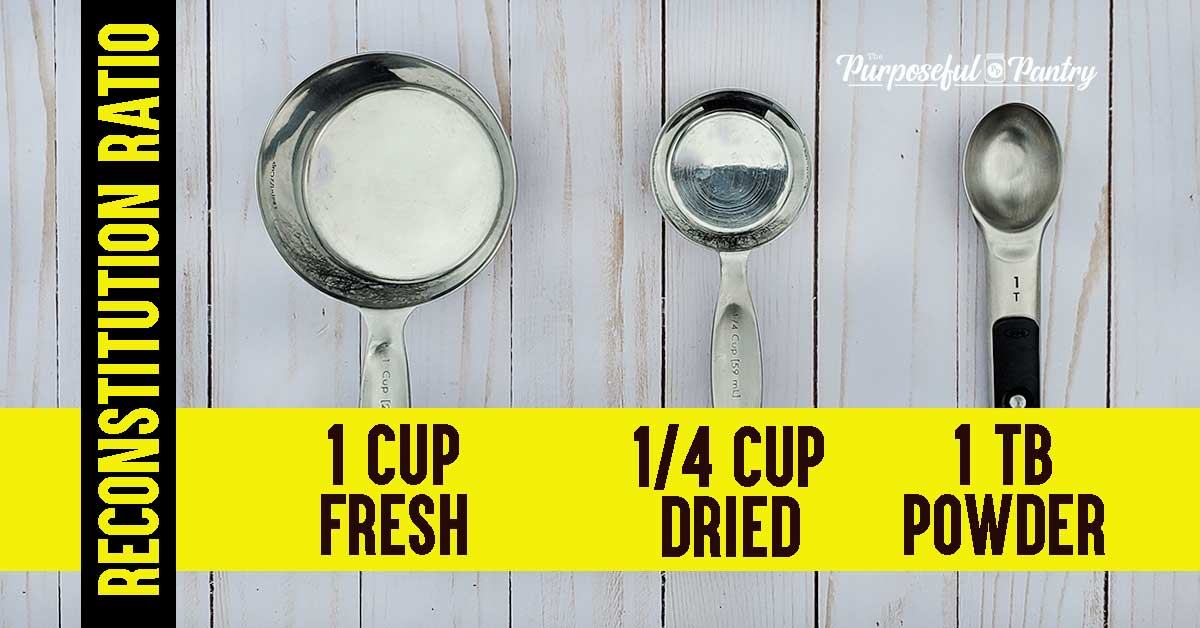
How do I reconstitute dehydrated food?
Rehydrating dehydrated food is easy with these three simple ways of reconstituting your dried foods:
Soak in boiling water, simmer in hot liquid, or do an overnight soak in the fridge.
Can I dehydrate full meals?
Yes, and no. There are many meals that can be dehydrated whole (spaghetti, chili, soup, some casseroles), but many either are too dense (lasagna) or contain too much fat. Those that do contain a lot of fat or meat are optimally best stored in the freezer until such time you need them for your hiking/backpacking/camping trip. They will be fine for those short-term storage needs.
You can also create meals in a bag for putting quick meals together from dehydrated or even some freeze-dried ingredients. To get you started, try this Taco Soup in a Jar recipe.
Can I over-dry food?
No, not for food that goes into storage. You can over-dry fruit leather or jerky because you may not like the crisper texture.
DEHYDRATED FOOD STORAGE FAQ’s
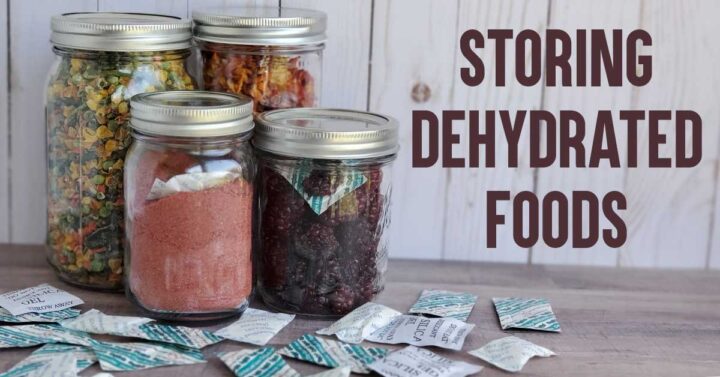
How do I store dehydrated foods?
Airtight containers. Any container like canning or mason jars, Rubbermaid, Tupperware, commercial jars from the store, mylar bags, or vacuum seal bags will work for airtight storage.
You do not need to use moisture absorbers or oxygen absorbers, but they can add insurance to keep foods lasting longer in your pantry. Learn about how each works in this helpful post.
How long does dehydrated food last?
If properly dried, conditioned, and stored, most foods are optimally good for about two years. However, you may get much longer out of them.
Fruits and tomatoes seem to have a shorter shelf-live, and powders should be used within six months.
How do I stop powders from clumping?
Powders often clump from high sugar content or added moisture. Properly dry your produce first, slow grinding processes (don’t overwork your powder), drying powder once done, and adding arrowroot powder are ways to help prevent clumping. Here are more tips to keep your powders from clumping.
Do I need to vacuum seal jars?
No, as it isn’t necessary. But it can be a helpful tool in keeping moisture away and prolonging shelf-life. Oxygen absorbers and moisture absorbers are also not necessary. Learn more about how to store dehydrated foods.
Dehydrator Care
• Do I have to Test My Dehydrator
• Do I have to Clean My Dehydrator
• DIY Fruit Leather Tray Hack
Questions?
Dehydrating is a great way to increase your long-term pantry storage. If you have questions about dehydrating that I haven’t answered here, please let me know in the comments.
